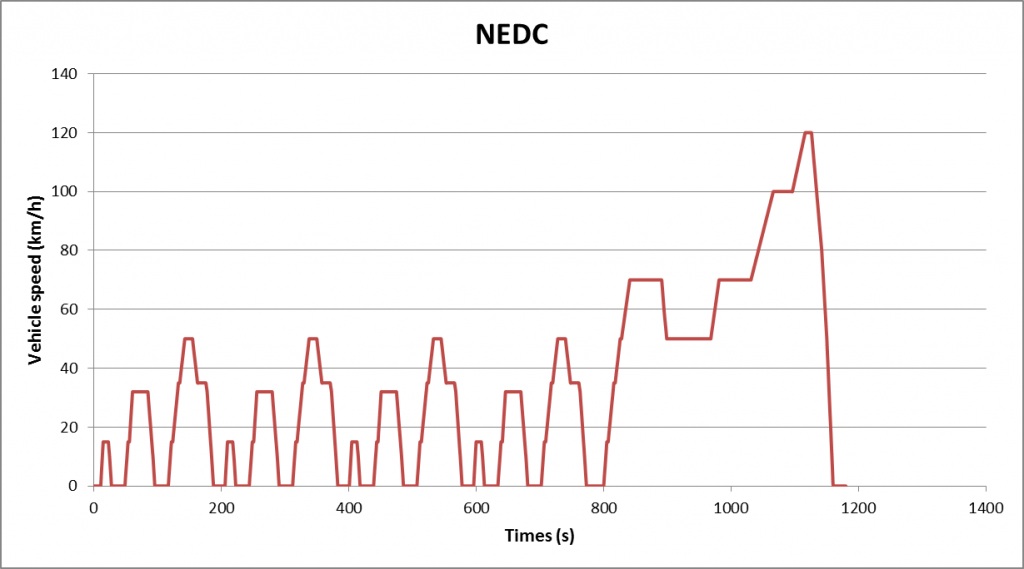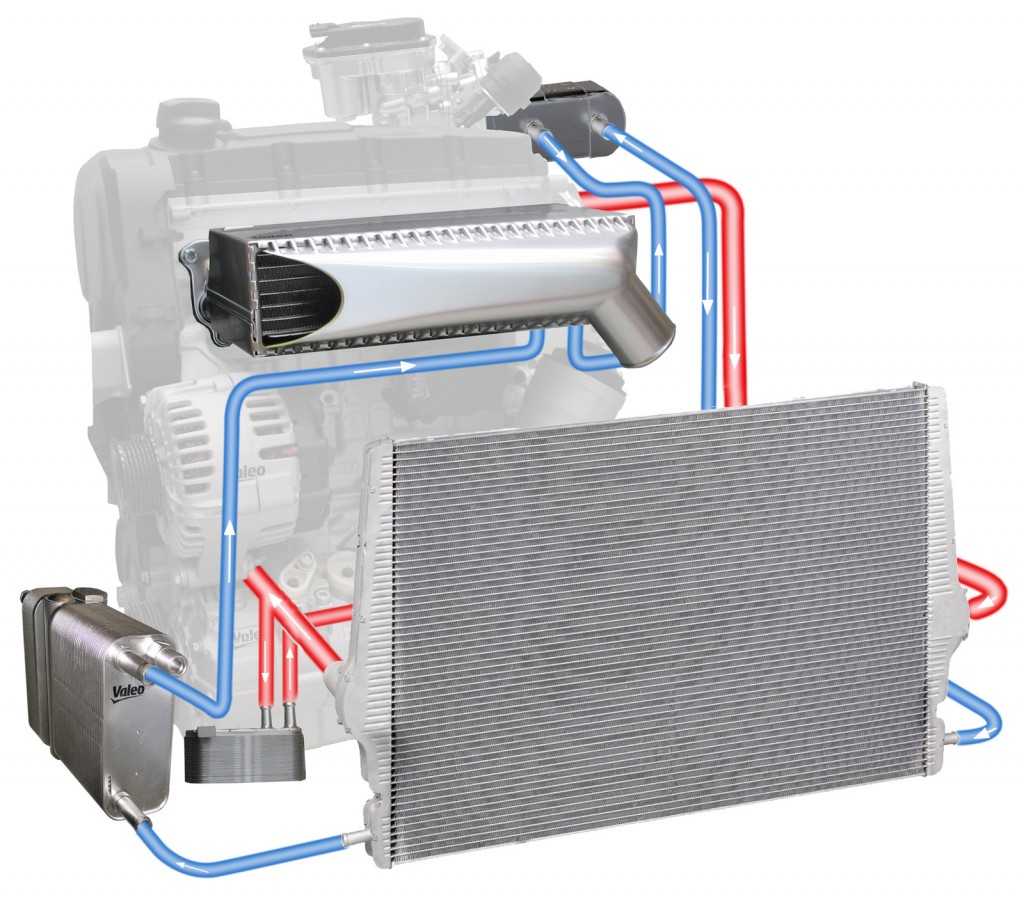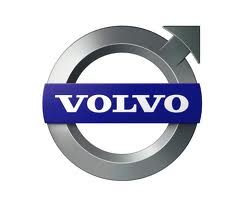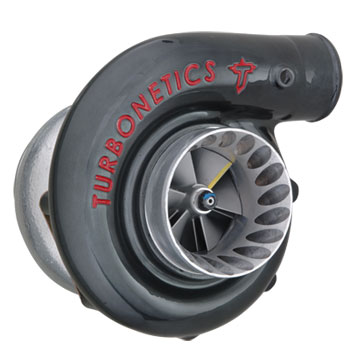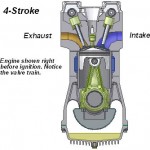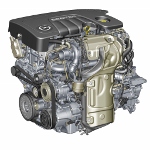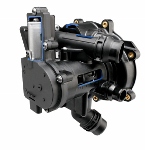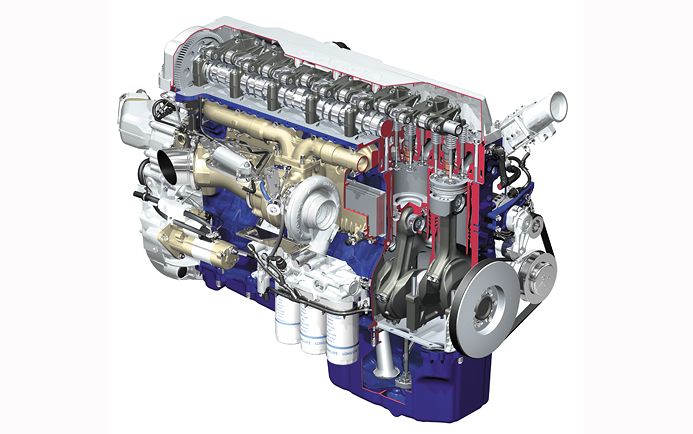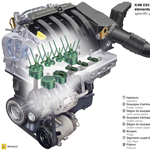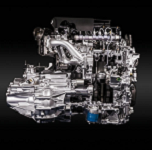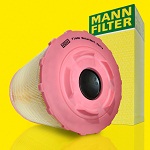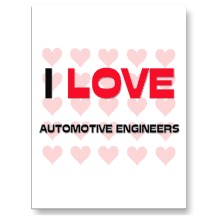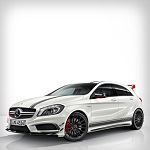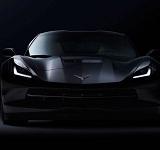Thanks to their evergreen designs and increasing demands, the values of these classic Pontiacs are bound to go up soon.
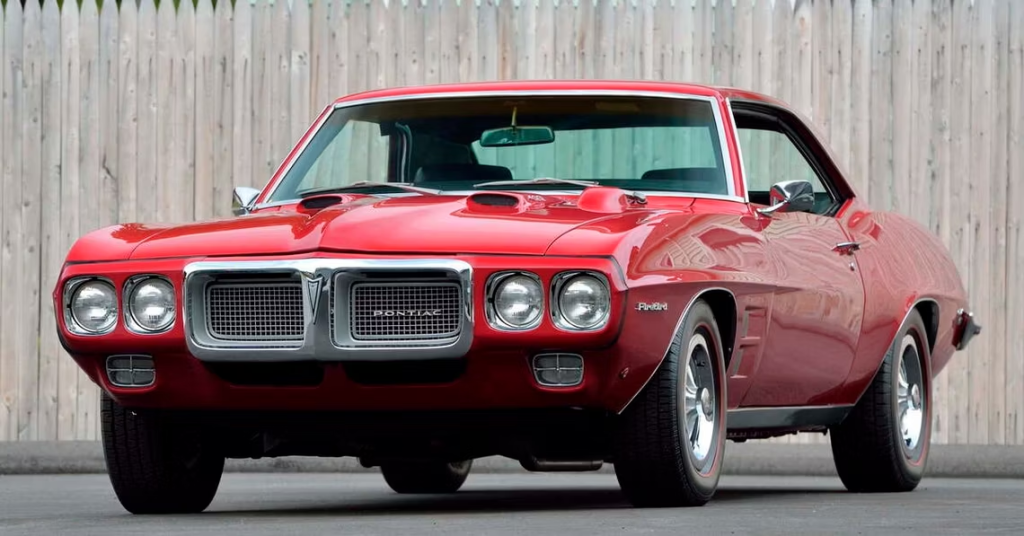
Pontiac was one of the influential American automotive brands that delivered iconic models that can never be forgotten, especially by muscle car enthusiasts and collectors. Pontiac was essentially a sporty and affordable division of parent company General Motors (GM), as it made the lowest-cost inline eight-cylinder car in the early 1930s.
Even though most of the defunct American automaker’s models started out at a pretty affordable price, they now command hefty figures, especially as the market is becoming increasingly aware of just how awesome they are. Pontiac models like the 1962 Catalina Super Duty Lightweight, 1969 GTO Judge Ram Air IV Convertible, and the 1977 Firebird Trans Am Special Ed Y82 are already demanding six figures, but you can get one of these models before they skyrocket in value.
8. 1963 Pontiac Bonneville

The Bonneville was a long-running nameplate built by Pontiac from 1957 until 2005. The base 1963 Bonneville was available in the form of a convertible and sport coupe. Like most cars from the early 1960s, the Pontiac Bonneville was beautiful and businesslike, with its no-nonsense bodywork.

The 1963 Bonneville is powered by several powertrain options, including a 6.9-liter (6899 cc) V8 engine with an output of 410 hp. This 1963 Pontiac Bonneville two-door sport coupe with a 390-hp 4-barrel engine is still very much affordable at $19,700, but expect the price to go up soon.
7. 1959 Pontiac Catalina

The Catalina was initially a name in the 1950 Chieftain Eight and Deluxe Eight trim lines, but by 1959, it became an entry full-size Pontiac model. At the time of release, the Catalina was one of the most affordable full-size Pontiac models. But it still managed to pack more standard amenities than the pricier Chevrolet Impala.

Today, the market is quickly realizing how much of a bargain the Catalina is, as it’s up by 14.5%, with an average price of $8,700. The most recent Catalina sales data available to Hagerty shows that the latest 1959 Catalina convertible coupe was sold for $58,300.
6. 1950 Pontiac Chieftain Deluxe

The Pontiac Chieftain was a replacement for the Torpedo, and it was the first model by the GM division to be built from the ground up after World War II. Although it’s built on GM’s A-body, the Chieftain is quite similar to the B-bodied Pontiac Streamliner.

The first-generation Chieftain comes with some cool optional features, including under-seat heaters and a radio with seven vacuum tubes. Pontiac offers both a six- and eight-cylinder engine for the 1950 Chieftain. While you can find a 1950 Chieftain for $28,700, bear in mind that the most expensive example ever sold went for $3.02 million.
5. 1966 Pontiac GTO

The GTO earned a standalone position in 1966, instead of being an optional package on the Pontiac Tempest LeMans. Selling over 96,946 units — the highest production numbers for all GTO years — the 1966 GTO played a huge role in popularizing the muscle car market segment in the 1960s.

Marketed as the “goat”, the GTO was particularly embraced by the youth demographic. The base engine for the 1966 GTO is a 389-cubic inch V8 with an output of 335 hp and 424 lb-ft of torque. While you can find a good 1966 Pontiac GTO for $32,200, the most recent example sold commanded nearly double that figure.
4. 1969 Pontiac Firebird 400

Dubbed the “Big Daddy”, the 1969 Pontiac Firebird 400 was redesigned with the introduction of a new chrome split grille fascia, rear-facing faux front fender ducts, and more pronounced chiseled bodylines. Pontiac engineers also installed Redline wide oval tires and two low-profile faux hood scoops on the 1969 Firebird 400.

The Big Daddy Pontiac gets its motivation from a 400-cubic inch V8 that cranks out 330 hp and 430 lb-ft of torque with the backing of a standard heavy-duty three-speed floor-shifted manual transmission. While you can still get a neatly used 1969 Pontiac Firebird 400 two-door hardtop coupe for $32,500, its sales chart shows it’s been on an upward trajectory for some time now.
3. 1971 Pontiac GT-37

The Pontiac GT-37 is essentially a sleeper GTO, dubbed the “poor man’s GTO”. It was introduced as an option to the Tempest T-37 in 1970 and was out of the market the following year, so it’s very understandable if you don’t remember it. As the demand for the GTO increased, the sleeper version’s value slowly nudged northward as well.

Today, Hagerty values the 1971 Pontiac GT-37 at about $24,100. There are three powertrains available for the 1971 GT-37, including a 455-cubic inch V8 making north of 335 ponies. The 1971 GT-37 comes with Muncie 3-speed floor shifter, rally wheels, and the GTO’s exhaust system.
2. 1962 Pontiac Grand Prix

Introduced as a full-size performance coupe, the Pontiac Grand Prix is the perfect classic sleeper car in today’s muscle car market. The all-new 1962 Grand Prix was furnished with bucket seats and a center console. Pontiac sold about 30,195 units of the Grand Prix in the first year, so it was largely successful, albeit expensive.

When it comes to power, the 1962 Grand Prix is by no means lacking, having a standard 303-hp 389-cubic inch V8. Pontiac also offers two other high-performance 389s, taking the output to 348 hp. The 1962 Pontiac Grand Prix Sport Coupe has seen a 22% rise in price recently, but is currently valued at $31,100.
- 1975 Pontiac Grand Ville Brougham

The 1975 Pontiac Grand Ville Brougham is a rare and highly desirable classic car available as a hardtop, convertible, and station wagon. With only about 4,519 examples built for the Grand Ville convertible in its final year, it has seen a 50.5% increase in value and currently commands $14,900.

The heart of the 1975 Pontiac Grand Ville Brougham beats with the power of a standard 400-cubic inch V8 with an output of 185 hp backed by an automatic turbo-hydramatic transmission. A big 455-cubic inch V8 is also available with a production figure of 200 hp.
10 American Classics That’ll Soon Be Worth A Fortune
These unique American classics will soon be out of most enthusiasts’ reach.
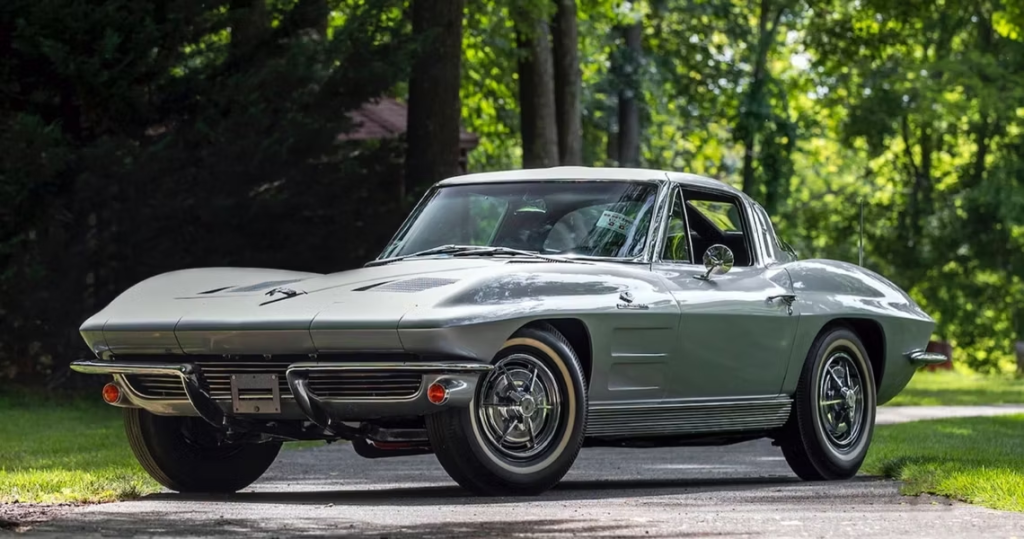
Most enthusiasts consider classics as near-immortal symbols of years past. They contain stories from the time of their production and offer glimpses of what it was like before electric cars and crossovers dominated the scene. There’s no telling what a classic car has survived and seen over the years.
America is known for delivering some of the best classic cars in history. It’s home to some of the best muscle cars and sports cars, including the Mustang, Camaro, Challenger, and Corvette. If you love investing in classic cars, here are a few American options that’ll soon be worth a fortune.
10/10
Chevrolet Corvette Stingray
The C2 Stingray was one of the best Corvettes ever made. It introduced an all-independent suspension that helped transform the Corvette in cornering power and traction. These changes helped make the Corvette a great track and road car.

The Stingray also got the new hydraulic power steering, giving enough road feel for most enthusiasts. Because of its updates over the predecessor, most enthusiasts considered it the first modern Corvette. It looked miles apart from the C1 with a longer hood, a unique rear fastback design, and a split rear window.
9/10
Dodge Viper

When you think of an affordable classic, it’s unlikely that the first thing that comes to mind is a Dodge Viper. However, the first-generation Viper is an ideal classic for any performance-hungry enthusiast. Even when Dodge introduced the car, it was a bargain and a brutal roadster.

The Viper was a modern supercar with a sophisticated transmission, a modern engine management system, and a computer-aided suspension design. It also got a massive 10-cylinder engine, enough to whet the appetite of any enthusiast. The 8.0-liter beast made the Viper an instant hit with its impressive 400 hp and 465 lb-ft of torque.
8/10
Dodge Dart

The 60s Dodge Dart was a hidden treasure that remained buried until now. Dodge offered the Dart in all body styles, from a station wagon to a convertible. The Dart also received different powertrains from the base 6-cylinder engines to the fire-breathing V8s.

In the 60s, Dodge offered the Dart as a four-door wagon and sedan alongside a 2-door hardtop and convertible. All models got three engine options, the base 145 hp 3.7-liter slant-6, a 230 hp 5.2-liter V8 and a 310 hp 5.9-liter V8.
7/10
Buick GNX

In the early 80s, Buick had a big image problem. Most people considered it a brand for older people who loved cushy rides rather than handling or performance. Since its demographic was aging, the brand had to find new ways to a younger, performance-oriented generation.

Buick created the GNX as a fitting farewell to the Grand National. It was a super Grand National with a simple and ambitious design. Under the hood of the GNX was the same 23 cubic-inch V6 but with a special T-3 turbocharger with a ceramic impeller. The net result was 276 hp and 360 lb-ft of torque.
6/10
Buick Wildcat

Buick is one of the oldest active American car brands. It has a long history of producing affordable luxury vehicles, even with its parent company, General Motors, having a reputation for discontinuing most of its divisions. Over the years, Buick has had impressive models, most competing with Cadillac and Chevrolet.

The Wildcat was a subseries of the Invicta, a Buick that had been around for many years. It had a longer body and some interior and exterior updates helping it distinguish itself from the Invicta. The Wildcat brought a more modern styling while retaining the 325 hp Nailhead V8 engine.
5/10
Ford Torino GT

Ford introduced the Torino to get a more muscle car market chunk. Even though the GT got its roots from the Fairlane series, it was one of the lesser-known names within the Ford family. It made one of the best cars to buy for anyone who had enough of the Mustang but not of Ford.

Ford offered the Torino GT as a hardtop, fastback, and convertible. It was available with only V8 engines from 1968 to 1969, but Ford later introduced six cylinders to the lineup. Besides the punchy engines and body styles, the Torino GT also got special exterior trim, wheel covers, and door panel lamps.
4/10
Pontiac Firebird

The Firebird was one of the most famous vehicles of the 60s and 70s. It had a coke bottle styling like the then Chevrolet Camaro. The Firebird was available as a two-door hardtop or convertible. Pontiac sold the Firebird across four generations from 1967 to 2002.

The first generation borrowed the body paneling of the Camaro and the split grille design of the GTO. It had multiple engine offerings, including an inline-6 and two punchy V8 options. All engine options were reasonably robust, with the inline 6 producing 165 or 205 hp and the V8s producing 250, 265, 285, or 325 hp.
3/10
AMC AMX

American Motor Corporation (AMC) was famous for producing economical and safe cars. However, this wasn’t translating into sales as the brand would like. The AMX was the brand’s try to build a performance car that could compete with the Camaro and Mustang while attracting younger car enthusiasts.

The AMX was a steel-bodied two-seater with a bolder grille and a cleaner fastback roofline. These design aspects helped give the AMX an aggressive look. Under the hood was a high displacement 290 cubic-inch V8 engine, producing 225 hp. The AMX could spring from 0 to 60 mph in 6.9 seconds, thanks to its lightweight and short wheelbase.
2/10
Plymouth Barracuda

In the early 60s, the big three, Chevrolet, Ford, and Chrysler, were competing to dominate the market with affordable, midsize-performance cars. The Barracuda was one of the first pony cars ever produced. Chrysler launched this pony car in 1964, before the introduction of the Ford Mustang.

Since Chrysler had a limited budget, the Barracuda was an iteration of the Plymouth Valiant. The first-generation Barracudas had small block engines and powertrains, all identical to the Valiant. The highest performance Barracuda had the 273 cubic inch V8, making it faster than a Mustang.
1/10
Oldsmobile 4-4-2

American muscle cars were iconic in the 60s as hip-hop was in the 90s. The history of the muscle car explosion was complex and fascinating, thanks to the horsepower race between Ford, Chrysler, and GM. The 442 was in production from 1964 to 1987.

Its 442-nomenclature stood for a 4-barrel carburetor, 4-speed manual, and dual exhaust. It perfectly fit in with the competition, especially the 1969 W-30 performance package that offered cold air induction that helped push it even further.
Here Are The 10 Most Desirable Modern American Convertibles
From Chryslers to Chevrolets and Fords, these new convertibles are some of the most impressive machines sold by American manufacturers.
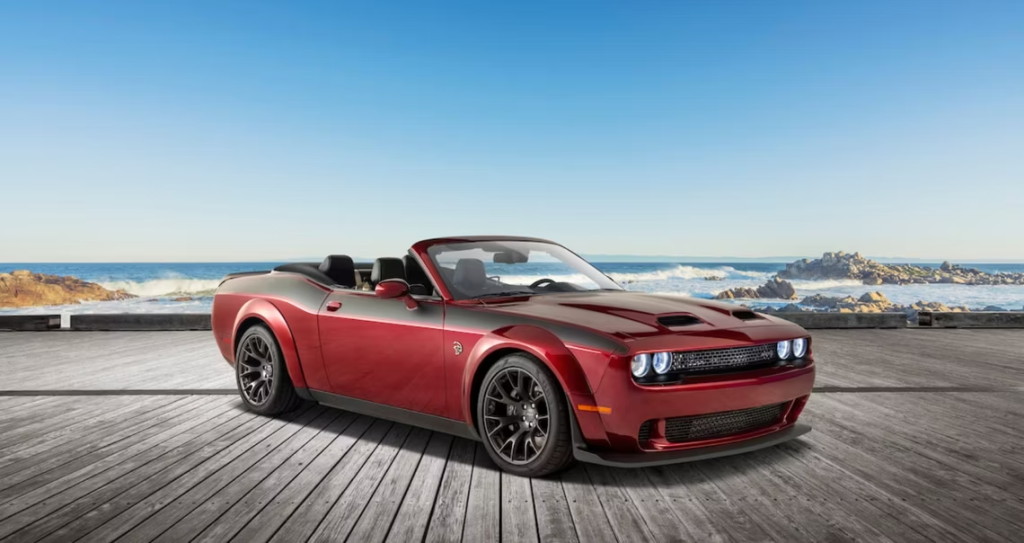
We all love convertibles. Unlike other car body styles, convertibles offer a wind-in-the-hair experience, giving us a sense of freedom. In addition, they feature unique styling, especially when you fold down the roof. Over the years, there have been outstanding convertibles.
Americans have built some of the best convertibles, with companies like Chrysler, Ford, and Chevrolet making them a staple of their lineup. Even though they aren’t as popular as their hardtop counterparts, they have a special place for anyone who yearns for a wind-in-the-hair experience.
10/10
Saturn Sky

Saturn Sky was the two-seat brother to the Pontiac Solstice. Both sports cars used GM’s rear-drive Kappa platform, but the Sky had better sound insulation and a softer tide. Even though it was 500 lbs heavier than the MX-5, it took turns with aplomb.

If you still prefer the Sky but want better sports car performance, the Red Line model notably ups the ante. The model features a 2.0-liter four-cylinder engine producing 260 hp, 50% more than the base variant. It also has upgraded 18-inch alloys and Bilstein shocks.
9/10
Fisker Karma Sunset

On launch, the Karma had futuristic looks and a futuristic powertrain. It had battery-powered electric motors for the rear wheels and a turbocharged four-cylinder gasoline engine from GM. The Karma was big, heavy, and not cheap, making it a common sight in Hollywood.

Fisker also introduced the Karma S (Sunset), a two-door hardtop convertible with the power to delight tree-hugging enthusiasts. The Sunset shared the same aluminum space frame as the Karma sedan. It also got the Q-Drive series hybrid system with two electric motors producing 402 hp and a 260 hp 2.0-liter turbocharged 4-cylinder engine.
8/10
Cadillac XLR

The XLR was a powerful and sexy two-seat convertible that helped showcase Cadillac’s advanced technology. Their design was to produce a long, low, and topless convertible. In short, it was a Corvette-powered convertible dressed in Cadillac duds.

The XLR maintained Cadillac’s knife-sharp signature look, making it one of the better-looking Cadillac offerings. It offered a folding hardtop that presented a sleek and clean profile with the top down. Under the hood was a 4.6-liter V8 producing 320 hp and 310 lb-ft of torque.
7/10
Jeep Wrangler

Nothing screams freedom like taking the Wrangler down a trail with an adventure awaiting around the bend. The Wrangler is an iconic off-roader with a retro exterior style. It pays homage to the rugged Jeeps from World War II.

The modern Wrangler features modern conveniences, including an eight-speaker stereo, cruise control, and touchscreen infotainment. There are also luxurious trims that feature ambient interior lighting, a power-operated soft top, and leather upholstery. It’s available with a two and four-door variant, all featuring a host of powertrains, including a 6.4-liter V8.
6/10
Ford Bronco

Whether you plan to go through a drive-thru window or dense forest trails, the four-wheel Ford Bronco is one of the most exciting off-roaders since the Wrangler. The Bronco is available in both two and four-door body styles.

In addition, you can easily remove the doors and roof, like in the Wrangler, to make a cool-looking convertible SUV. The only difference with the Wrangler is that the Bronco retains its mirrors. Under the hood, the Bronco offers more base horsepower, too, with the figures ranging from a 300 hp 2.3-liter turbocharged inline-four to a 330 hp 2.7-liter twin-turbo V6.
5/10
Dodge Viper

A few decades ago, Ferrari and Porsche unveiled their astonishing 478 hp F40 and 444 hp 959 supercars. Back then, 400 hp was a significant number. Nowadays, horsepower wars have gotten crazier, with sedans from Mercedes and BMW producing at least 500 hp.

Even though the Viper is no longer in production, it was available as a coupe and convertible. The coupe had a 202-mph top speed while the convertible got a 197-mph top speed with the roof down. Dodge fitted the Viper with an 8.4-liter V10 engine mated to a 6-speed manual gearbox, producing 600 hp and 560 lb-ft of torque.
4/10
Chevrolet Camaro

The convertible Camaro is a cool, menacing, sophisticated muscle car with a hunkered-down stance. Not only is it a great car to drive, but it’s also a great-looking car. The convertible helps open up the pillbox view of the coupe at the press of a button.

It features an insulated fabric roof in color like dark brown, black and dark blue. Chevrolet ensures that the convertible Camaro remains a sporty, fun, and carefree model. The Camaro is available with a comprehensive engine selection, including a 2.0-liter turbocharged four-cylinder, 3.6-liter V6, and 6.2-liter V8.
3/10
Ford Mustang GT

Nowadays, there is a Mustang for every personality and lifestyle. You can use your Mustang for track times or top-down trips on the Sunset Strip. Ford offers the Mustang with numerous appearance packages, coupe or convertible body styles, and notable performance-enhancing options.

The power for all models comes from a punchy turbocharged four-cylinder engine or Ford’s mighty 5.0-liter V8. The GT convertible uses the latter engine, producing 450 hp and 410 lb-ft of torque. It also comes standard with a host of standard features like Brembo brakes, track-focused apps, and an active exhaust system.
2/10
Chevrolet Corvette

The Corvette is an iconic American sports car with performance that rivals exotic vehicles. It’s a comfortable sports car with a nicely trimmed cabin, good enough to drive daily. The latest iterations feature a mid-engine sports car, making it a modern-day icon.

Even with the engine in a new location, it retains the 6.2-liter V8, producing 490 hp and 470 lb-ft of torque. The Corvette is available as a coupe and a convertible. The convertible retains the same two-passenger configuration while offering the best blend of performance and open-air experience.
1/10
Dodge Challenger

Rarely will you find a car built for the drag strip offering the open-air opportunity while you scream down the strip. In most cases, that’s for the best. Since the Challenger is a long-time rival of the Mustang and Camaro, enthusiasts have always yearned for a convertible variant.

Even though Dodge is dropping off the curtains for the Charger and Challenger, convertible enthusiasts can rest assured that they can enjoy a Challenger with a foldable roof. The process is through a third-party brand, Drop Top Customs, leaving no stone untouched.
These Are The 10 Coolest Special Edition European Cars
Some of the most exclusive and technologically-advanced cars European manufacturers ever put on the streets.
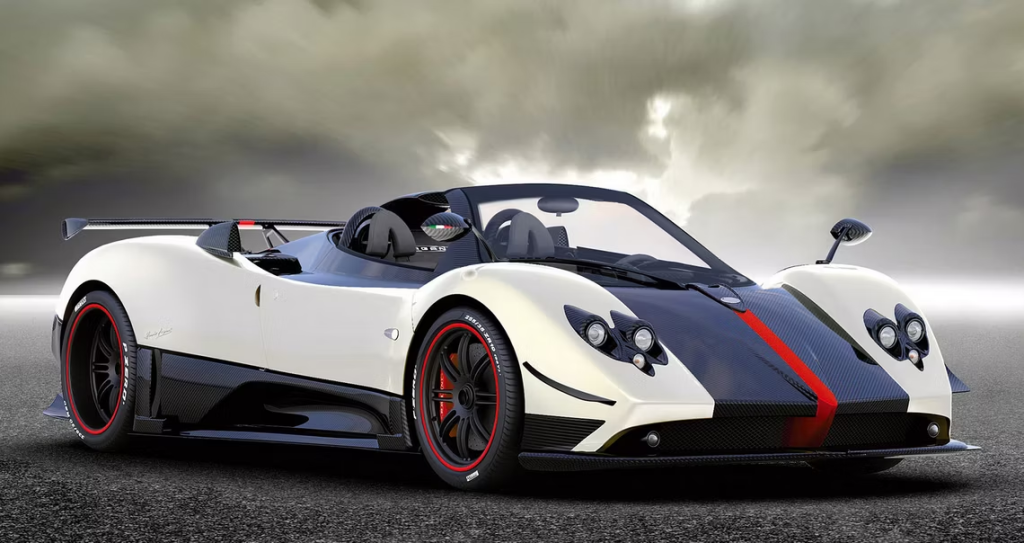
European manufacturers are famous for creating performance cars with powerful engines and excellent handling. Often, these models are more performance-oriented versions of everyday luxury cars built by the brands’ special performance divisions. This is because, besides offering powerful models, these manufacturers have to try and create reliable cars that drive well and can be sold in many markets worldwide.
However, European manufacturers also produce special edition examples geared towards enthusiasts. No matter the reason, we enjoy these rare and technologically advanced models, some of which we might never get to see again.
10/10
Renault Clio Williams

Renault built the Clio Williams as a homologation special to go rallying. During this time, the maximum displacement for rallying was 2.0 liters. Renault had to make 2,500 examples to meet the homologation requirements, although they would eventually build more.

Renault also built the Clio Williams to celebrate Nigel Mansell’s F1 title behind the wheel of a Renault-powered Williams. The Clio got a rev-happy 2.0-liter 16V engine from the Renault 19. It was capable of 148 hp at 6,100 rpm while weighing in at only 2,183 lbs.
9/10
Peugeot 306 Rallye

Peugeot used all the experience they had learned from creating their 205 and 106 Rallye models. The brand used the 306 GTI-6 as the base, ditching any unnecessary day-to-day equipment and focusing on getting the most from its engaging chassis and a 165-hp engine.

At the limit, the 306 Rallye was edgy, requiring drivers always to be keen. It had a potent mix of rev-happy top end and torque. Its 2.0-liter inline-four engine was mated to an impressive 6-speed manual gearbox, making the Rallye a fun front-wheel drive rally car.
8/10
Mini John Cooper Works GP R56

With only 2,000 examples made, the GP R56 Mini received an aero kit reducing its drag by 6%. Such unique features helped make the Mini practical and rare. The company also made the Mini hyper agile and stiff by adding more lift-off oversteer and torque steer.

Even nowadays, the JCW is still the ultimate Mini with its breakneck speed. It features unique engineering strengths thanks to road testing and development at the Nürburgring. The brand took a race car style approach, creating a sports car that we might never see again.
7/10
BMW E46 M3 CS

Before BMW rewarded enthusiasts with the excellent CS, they had unveiled their outlandishly expensive carbon-roofed CSL. The CS was a great special edition BMW which inherited most enhancements from the CSL.

In addition, the CS got some understated looks and improvements, like revised springs, bigger brake discs, and a quicker steering rack. The CS also got the M Track mode from the CSL, allowing more wheelspin and slip, even with traction control engaged.
6/10
Mercedes-Benz C63 AMG Edition 507

The Mercedes C63 range makes one of the best sports cars on the market. The special Edition 507 was even more unique since it was available on all C63 variants; wagon, sedan, and coupe. The Edition 507 received the M156 V8 engine, new conrods, a revised ECU, forges pistons from the SLS AMG, and a lightweight crankshaft.

The engine was more powerful than in the normal C63 variants, producing 493 hp allowing the 507 to achieve a 4.2 seconds 0 to 60 mph run. Mercedes also removed the limiter seeing the top speed rise from 155 to 174 mph.
5/10
Mercedes-Benz AMG Hammer

The car’s name says exactly what it is; a hard-hitting tool. The Hammer was one of the hottest passenger sedans in history, created by AMG to pound the competition flat. This unique car from Mercedes was a hot rod that could utterly annihilate the competition on practicality, comfort, and instant ability to rocket across the face of the earth.

It was an E-Class modified by AMG to keep you at ease as you pierce through the atmosphere. Mercedes equipped the Hammer with a 5.5-liter V8 producing 355 hp and 388 lb-ft of torque. This was enough power for the Hammer to claim the world’s quickest four-door car title.
4/10
Ferrari 360 Challenge Stradale

Even with the 430 and 458 Speciale being more modern, the 360 CS was extremely rare and unique. With a 4.1-seconds 0 to 60 mph time, the 360 SC had a naturally aspirated flat-plane crank V8, an automated manual F1 gearbox, and some carbon ceramic brakes.

The 360 CS helped raise Ferrari’s standards by being a great successor to the F355. With the extra performance elements and Ferrari’s timeless styling, it was easy to consider the 360 CS the perfect sports car.
3/10
Lamborghini Gallardo Superleggera

Also considered a baby Lambo by some enthusiasts, Lamborghini had to try to remain relevant during the 10-year production run of the Gallardo. By the time Lamborghini launched the Superleggera in 2003, there was stiff competition from the 360 CS and GT3.

Upon its release, the Superleggera was a lightweight Gallardo with titanium wheel nuts, and a carbon fiber lashed rear diffuser to help reduce weight by 220 lbs. the Superleggera also got some grabby carbon brakes and an e-gear transmission.
2/10
Lamborghini Veneno

Even though anniversaries are fairly rare for Lamborghini, the Veneno was one of the vehicles with a performance punch and sheer visual impact. It remains one of the cars from Lamborghini with an ultra-extroverted design.

Lamborghini built the Veneno to celebrate 50 years of the brand being in business. Not only did it look like a batmobile, but the Veneno produced 740 hp from a 6.5-liter V12. It also had a top speed of 221 mph and Lamborghini’s unique single-clutch automated manual transmission.
1/10
Pagani Zonda Cinque Roadster

Virtually we can argue that all Zonda models ever built are special editions. These versions include a level of customization only available to a few people worldwide. The Cinque Roadster is a more limited variant featuring Pagani’s unique carbo-titanium monocoque chassis.

Its heartbeat was a 7.3-liter Mercedes V12 producing 660 hp and 575 lb-ft of torque, enough to reach a 217-mph top speed. The brand built only five of the coupe and roadster iterations, with close to none popping up for sale.
These 10 European Cars May Be Underpowered, But They’re Still A Ton Of Fun
They may look slow on paper, but these Euro performance cars will have you grinning as soon as you step on the gas pedal.
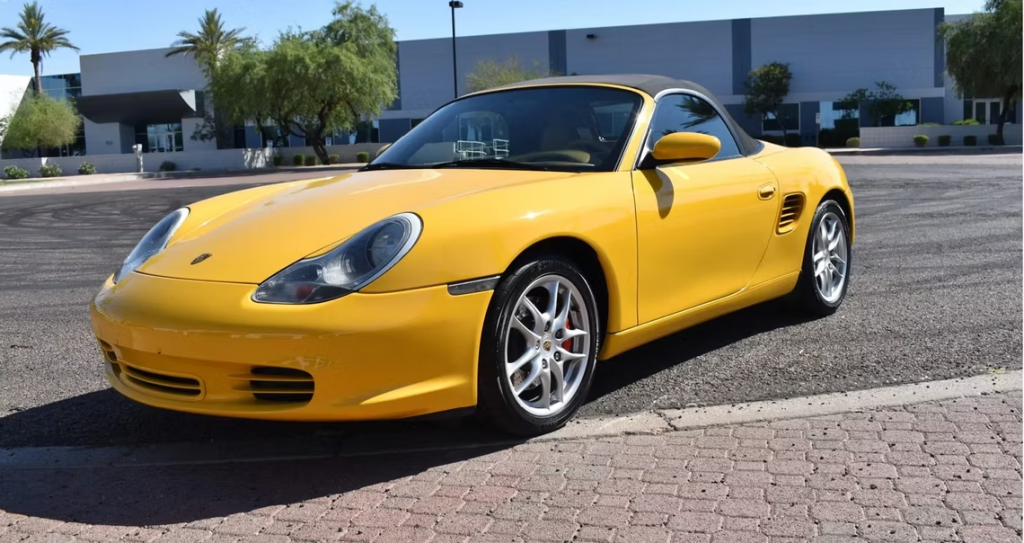
Europe is synonymous with some of the world’s best performance cars. Nowadays, the performance cars section has turned into an all-out arms race to see who can squeeze more power into their existing models. Europeans have offered some stylish, luxurious, and fast examples to prove their case.
It’s no surprise that some enthusiasts might cringe at underpowered cars. Most are fun, however, even with their muted horsepower figures. Yes, they might feel underpowered, but they are rewarding when pushed to the limits. Here are some of the best underpowered European cars that will have you grinning uncontrollably in seconds.
10/10
Smart Fortwo

The Fortwo was born from the unlikely collaboration between Mercedes and Swatch. The Smart Fortwo is one of the smallest cars you can find on sale today, but it’s crammed full of personality. It features a small three-cylinder engine that produces excellent noise while thrumming away below the cargo area.

The latest generation Fortwo is available with a manual transmission which is light years better than the jerky semi-automatic of the older variants. The Fortwo is easy to park and a blast to drive, as long as you don’t corner too enthusiastically.
9/10
Mini Cooper

The old and lovely Mini won races without being quick. It was fun to drive fast on windy roads and tracks. The Mini has been a resounding success ever since the launch of the first variant. After BMW acquired the Mini brand, they added a modern twist helping start the front-wheel-drive revolution.

Over the past two decades, there have been different variations of the Mini, including a wagon. The Mini easily maintains the original’s fun factor even with the less powerful base variant. The fun thing about these variants is that they are more fun than their larger BMW siblings.
8/10
Fiat Panda

Fiat’s Panda is undeniably one of the most exciting and unique subcompact cars of all time. Even though it has a tiny exterior, the Panda is quite spacious and practical inside. In addition, the Panda is reliable, efficient, and easy to fix and maintain.

The 100HP variant is a unique Panda that offers decent straight-line performance. According to Fiat, this iteration can speed up from 0 to 60 mph in 9.5 seconds. This jazzed-up hot hatch has a 1.4-liter engine under the hood, helping it create around 100 hp.
7/10
Caterham Seven 170

Caterham is among the most notable names in the unhinged track day sports car industry. The brand is synonymous with building modernized versions of the Lotus Seven. Most of them have a Ford Duratec engine under the hood; that’s surprisingly quick.

However, the base version in Caterham’s lineup is the Seven 170. It features a turbocharged 660 cc Suzuki engine producing 83 hp. This might seem like little power, but it’s enough to propel the Seven to a 6.9 second 0 to 60 mph time. As the entry-level Caterham, it offers excellent handling and enough power to have fun on some twisty roads.
6/10
Fiat 500

Just like the Mini, the original Fiat 500 was a seismic shift in the world of small cars. Some enthusiasts often consider it one of the first purpose-built city cars. This original Fiat 500 was unique compared to the Mini because of its rear engine placement and rear-wheel-drive setup.

The earlier models of the 500 made around 20 hp. However, they were extremely light, and despite their tiny proportions, they were spacious and practical. The Fiat 500 is still a fun-to-drive car, even with its archaic engine and chassis.
5/10
Volvo 240

Volvo’s 240 was a heavy family car, built like a tank. This overengineered vehicle had an instantly recognizable design that helped make it a true timeless classic car. The 240 had ridiculous levels of reliability and was available in multiple variations, including wagon, coupe, and sedan.

Even though Volvo never intended their cars to go fast, the 240 was available with a choice of diesel and gasoline engines. In addition, it was a slow drift car allowing drivers to throw the rear end sideways, especially when there was snow.
4/10
Peugeot 106 Rallye

Even though Peugeot seems to be returning to its old hot hatch building form, we’re yet to see the resurrection of the celebrated Rallye. It was one of the brand’s most accessible models when it launched in 1994 and 1998. The Rallye was based on a small economical city car, making it a feasible alternative for many enthusiasts.

Peugeot fitted the Rallye with a 1.3-liter four-cylinder engine producing 99 hp. Unlike the predecessor, the 205 Rallye, which had a pair of carburetors, the 106 Rallye had Magnetti Marelli fuel injection. It also had beefed-up suspension and thicker anti-roll bars for a more aggressive setup.
3/10
Volkswagen Scirocco

The Scirocco is a beautifully styled sports car that shares some qualities with the Volkswagen Golf. Unlike the Golf, the Scirocco has better sporting flair, and we love it for its stunning styling and performance. The Scirocco has been around since 1974 as a successor to the Karmann Ghia coupe.

Over the years, the Scirocco has been available with multiple engine options. One of their strongest engines was the turbocharged 2.0-liter engine producing 197 hp and 206 lb-ft of torque. This might not be a lot, but the Scirocco has excellent aftermarket support allowing tuners to get over 300 hp easily.
2/10
Fiat 124 Spider Abarth


However, the Spider has a different soul. Performance-wise, it’s a joyous ride that handles crisply, accelerates smoothly, and makes driving more adventurous and fun. Its 1.4-liter MultiAir turbocharged inline-four engine is a significant contributing factor with its 164 hp and 184 lb-ft of torque.
However, the Spider has a different soul. Performance-wise, it’s a joyous ride that handles crisply, accelerates smoothly, and makes driving more adventurous and fun. Its 1.4-liter MultiAir turbocharged inline-four engine is a significant contributing factor with its 164 hp and 184 lb-ft of torque.

The driving experience from a Porsche is everything you would expect, even if that’s from their slightly underpowered Boxster lineup. Porsche’s Boxster makes for one of the best entry-level sports cars on the market. They are reliable, easy to maintain, and fun cars to drive.

The base Porsche Boxster is surprisingly short on horsepower; however, it’s an excellent offering for enthusiasts who love a challenge behind the wheel. The earlier generations had Porsche’s 2.7-liter flat-six engine producing 217 hp, capable of a 6.8 seconds 0 to 60 mph run.
10 Cheap Cars That Are Underpowered But Still Tons Of Fun To Drive
These cars are proof that you don’t have to spend a fortune on a performance car to enjoy a thrilling drive.
When asked to name a fun car, most enthusiasts might name the fastest, most expensive car that comes to mind. Most people perceive a car as more fun when it has more power and speed. Even though this is true in most cases, sometimes, these cars can be scary to drive.
Some enthusiasts believe that it’s more fun to drive a slow car fast than a fast car slow. There’s some truth to the statement because driving slow cars is rewarding. In a fast car, you only need to floor the throttle and take off at neck-breaking speeds. Here are some cheap, slow vehicles that will teach you how to drive properly while working to keep the speed up.
10/10
Subaru BRZ – $28,595

The first-generation Subaru BRZ came into production in 2012. It was also known in some markets as the Toyota GT86 and the Scion FRS. These models offer near-perfect weight distribution with a light 2,800 lb curb weight. They manage to offer serious fun with their remarkable agility and composure.

9/10
Mazda Miata – $27,650

The Miata is Mazda’s pride and joy. Since its introduction in 1989, Mazda has sold over 1 million units of the Miata, making it the best-selling two-seater sports car. There are many things to love about the Miata, the main being its reliability, design, affordability, and driving feel.

The Miata was created with the aim of prioritizing driving feel over speed. This helps make the Miata a blast to drive, even when it tops out at 130 mph top speed. No matter the engine you choose, the Miata won’t shine in a straight line; however, it will amaze you when cornering.
8/10
Mini Cooper – $23,400

The old and lovely classic Mini managed to win races without being a fast car. It was fun to drive fast on narrow, twisty tracks and roads. The new Mini Cooper is more luxurious, heavier, and powerful than the classic Mini.

Surprisingly enough, it maintains the original’s fun factor making it a worthy consideration for anyone looking for an underpowered car that’s fun to drive. The great thing about the new Minis is that they are more fun than their bigger BMW siblings.
7/10
Abarth 500 – $20,745

To most people, the Abarth 500 is a tiny cure car. However, enthusiasts love this car for its variety of peppy engines that will make you grin with every corner you take. The Abarth 500 is one of the best small sport hatchbacks on the market.

It has a lovely style and is exciting enough to provide a great overall experience. The 500 first appeared in 2007 and later received a minor facelift in 2015. The Abarth variant is the most powerful Fiat 500 and is available with manual and automatic transmission options.
6/10
Nissan 240SX – $10,000

Over the years, the Nissan 240SX has been the go-to drifting car. It’s slow enough for beginners to learn, but when it’s properly set up, it can be a magnificent race car. The 240SX has a robust chassis capable of handling much more power than what’s currently available.

Besides having a solid platform, the S13 and S14 variants of the 240SX are over 300 lbs lighter than a Ford Focus. With a $10,000 budget, you can easily find a good 240SX that’s fun and easy to drive. Besides, you have many modification options, allowing you to have unlimited fun.

The Karmann Ghia was one of the best cars from Volkswagen. The magic formula for the Karmann Ghia was its Italian design and the Beetle floorplan. Both aspects helped make the Karmann Ghia one of the most beautiful cars of the 1950s.

The Karmann Ghia was in production in the 50s and 60s and was the fastest and most luxurious post-war car from Volkswagen. It was also a reliable version that was fun to drive because of its rear engine placement.
4/10
Volkswagen Golf GTI – $8,600

The GTI is considered one of the best hot hatches of all time. The Mk1 was the first-generation Golf, and it helped usher in the hot hatch genre. Even though it wasn’t the first hot hatch, it’s widely considered to be the reason why we have a hot hatch segment.

Over the years, the Golf GTI has grown in popularity and cemented its reputation as a practical daily driver with just enough power for anyone to have fun. Since its birth in 1975, Volkswagen has produced millions of examples of this model, and they’re still doing so to date.
3/10
Toyota MR2 – $7,300

When looking for the best Toyota MR2, you’ll have to choose from three generations. None of these is particularly fast apart from the second-generation turbo versions. The first generation MR2 was arguably the most fun to drive, but it’s also becoming rare nowadays.
All MR2 generations offer a thrilling driving experience, but they aren’t as newbie friendly as the Nissan 240SX. These require a bit more skill, especially when driving on a twisty road or track – thanks to its mid-engine placement.
2/10
Porsche 944 – $6,100

Porsche’s 944 was the successor to the 924. It was one of Porsche’s first front-engine sports cars. It was slightly more powerful than the 110-hp Porsche 924, making it a fun-to-drive car and a great grand tourer. Besides, Porsche mounted the gearbox at the rear giving the 944 outstanding balance and handling.

The 944 was also a reliable car that you can still have tons of fun with nowadays. Its gas mileage was also fairly decent, with the naturally aspirated engines offering between 27 and 32 MPG on average. Porsche’s 2.5-liter inline-four engine produced 163 hp before the introduction of the catalytic converter that lowered the power to 150 hp.
1/10
Volvo 240 – $4,900

The 240 was one of the best Volvo models and was built like a tank. Unlike the Nissan 240SX, the Volvo was heavier. It was never intended to go fast, even after Volvo introduced the turbo versions. However, the 240 was a robust, large, and boxy overengineered masterpiece.

The 240 was available in multiple variations, including a coupe, sedan, and the more popular wagon. It was also available with a choice of diesel and gasoline engines. One of the things that made the 240 great was that it was a great, slow drift car allowing you to throw the rear end sideways when there was snow.






